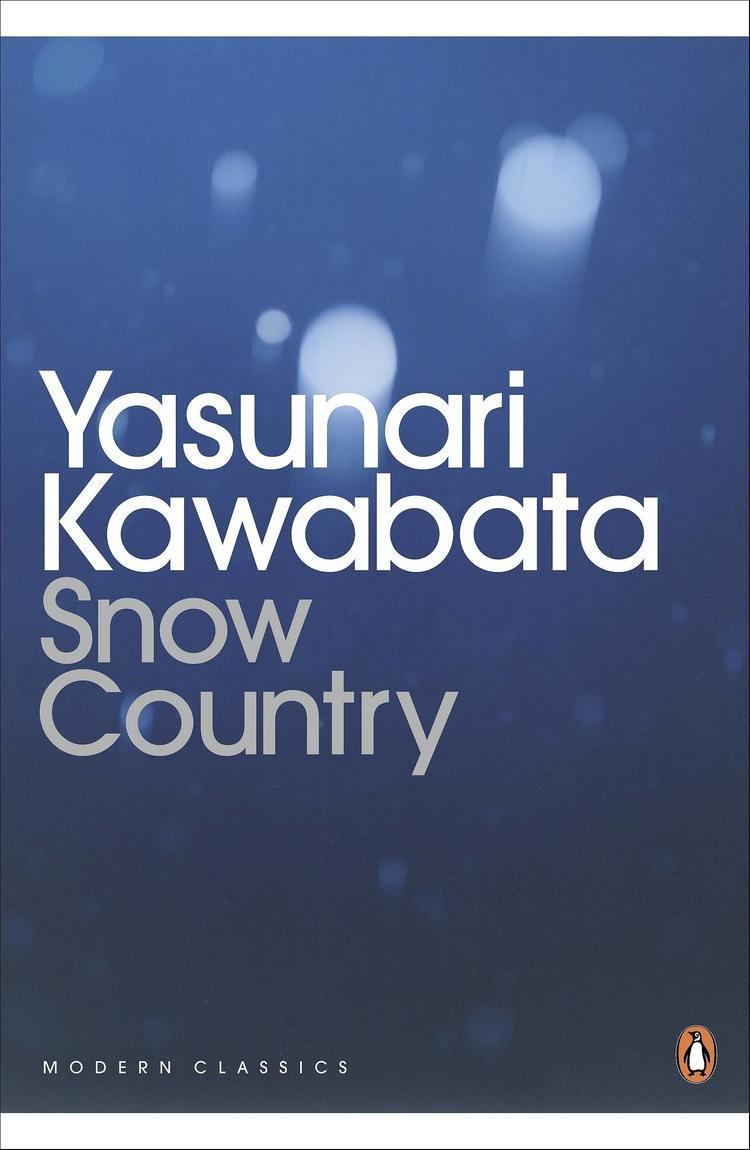7.4 /10 1 Votes7.4
Original title 雪国Yukiguni Published in English 1956 OCLC 3623808 | 3.7/5 Goodreads Language Japanese Originally published 1948 Country Japan Adaptations Snow Country (1957) | |||||||||||||||||||||||||||||||||
 | ||||||||||||||||||||||||||||||||||
Publication date 1935–1937 (serialization)1948 Similar Yasunari Kawabata books, Other books | ||||||||||||||||||||||||||||||||||
Snow Country (雪国, Yukiguni) is a novel by the Japanese author Yasunari Kawabata. The novel is considered a classic work of Japanese literature and was among the three novels the Nobel Committee cited in 1968, when Kawabata was awarded the Nobel Prize in Literature.
Contents
- Snow country yasunari kawabata part 1 malcolm fisher clara galante
- Plot
- Writing process
- Title
- Abbreviation
- Reception
- Nobel Prize
- Homage
- Publication history
- References
Snow country yasunari kawabata part 1 malcolm fisher clara galante
Plot
Snow Country is a stark tale of a love affair between a Tokyo dilettante and a provincial geisha that takes place in the remote hot spring (onsen) town of Yuzawa. (Kawabata did not mention the name of the town in his novel.)
The hot springs in that region were home to inns, visited by men traveling alone and in groups, where paid female companionship had become a staple of the economy. The geisha of the hot springs enjoyed nothing like the social status of their more artistically trained sisters in Kyoto and Tokyo, and were usually little more than prostitutes whose brief careers inevitably ended in a downward spiral.
The liaison between the geisha, Komako, and the male protagonist, Shimamura, a wealthy loner and self-appointed expert on Western ballet, is thus doomed to failure. The nature of that failure and the parts played by others form the theme of the book.
As his most potent symbol of this "counter-Western modernity", the rural geisha, Komako, embodies Kawabata's conception of traditional Japanese beauty by taking Western influence and subverting it to traditional Japanese forms. Having no teacher available, she hones her technique on the traditional samisen instrument by untraditionally relying on sheet music and radio broadcasts. Her lover, Shimamura, comments that, “the publishing gentleman would be happy if he knew he had a real geisha—not just an ordinary amateur—practicing from his scores way off here in the mountains.”
On his way to the town, Shimamura is fascinated with a girl he sees on the train: Yoko, who is caring for a sick man traveling with her. He wants to see more of her, even though he is with Komako during his stay. Already a married man, it doesn't faze him that he is thinking about Yoko while being public with Komako.
Writing process
The novel began as a single short story published in a literary journal in January 1935, with its next section appearing in another journal the same month. Kawabata continued writing about the characters afterward, with parts of the novel ultimately appearing in five different journals before he published the first iteration of the book. An integration of the initial seven pieces with a newly conceived ending appeared in 1937. Kawabata restarted work on the novel after a three-year break, again adding new chapters and again publishing in two separate journals, in 1940 and 1941. He re-wrote the last two sections, merging them into a single piece, published in a journal in 1946. Another additional piece arrived in 1947. Finally, in 1948, the novel reached its final form, an integration of nine separately published works.
Kawabata himself visited Yuzawa Onsen and worked on the novel there. The room in the hotel where he was staying is preserved as a museum.
Title
"Snow country" is a literal translation of the Japanese title "Yukiguni". The name comes from the place where the story takes place, where Shimamura arrives in a train coming through a long tunnel under the border mountains between the Gunma (Kozuke no kuni) and Niigata (Echigo no kuni) Prefectures. Sitting at the foot of mountains, on the north side, this region receives a huge amount of snow in winter because of the northern winds coming across the Sea of Japan. The winds accumulate moisture over the sea and deposit it as snow while running up against the mountains. The snow reaches four to five meters in depth, sometimes isolating the region's towns and villages from others. The lonely atmosphere suggested by the title is infused throughout the book.
Abbreviation
Kawabata again returned to Snow Country near the end of his life. A few months before his death in 1972, he wrote an abbreviated version of the work, which he titled "Gleanings from Snow Country", that shortened the novel to a few spare pages, a length that placed it among his Palm-of-the-Hand Stories, a form to which Kawabata devoted particular attention for more than 50 years. An English translation of "Gleanings from Snow Country" was published in 1988 by J. Martin Holman, in the collection Palm-of-the-Hand Stories.
Reception
Edward Seidensticker, noted scholar of Japanese literature whose English translation of the novel was published in 1957, described the work as "perhaps Kawabata's masterpiece." According to him, the novel reminds of haiku, both for its many delicate contrapuntal touches and its use of brief scenes to tell a larger story.
As Shimamura begins to understand his place in the universe, the idea of mono no aware is also quite apparent.
Nobel Prize
Snow Country is one of the three novels cited by the Nobel Committee in awarding Yasunari Kawabata the Nobel Prize for Literature in 1968, the other two works being The Old Capital and Thousand Cranes.
Homage
Another Japanese novel, also titled Snow Country but spelled in katakana as opposed to the original kanji, references this work. In the homage to the original, a Japanese student undertakes translating a book from English into Japanese for summer homework. The student does not realize he is in fact translating a translation of the original work.
